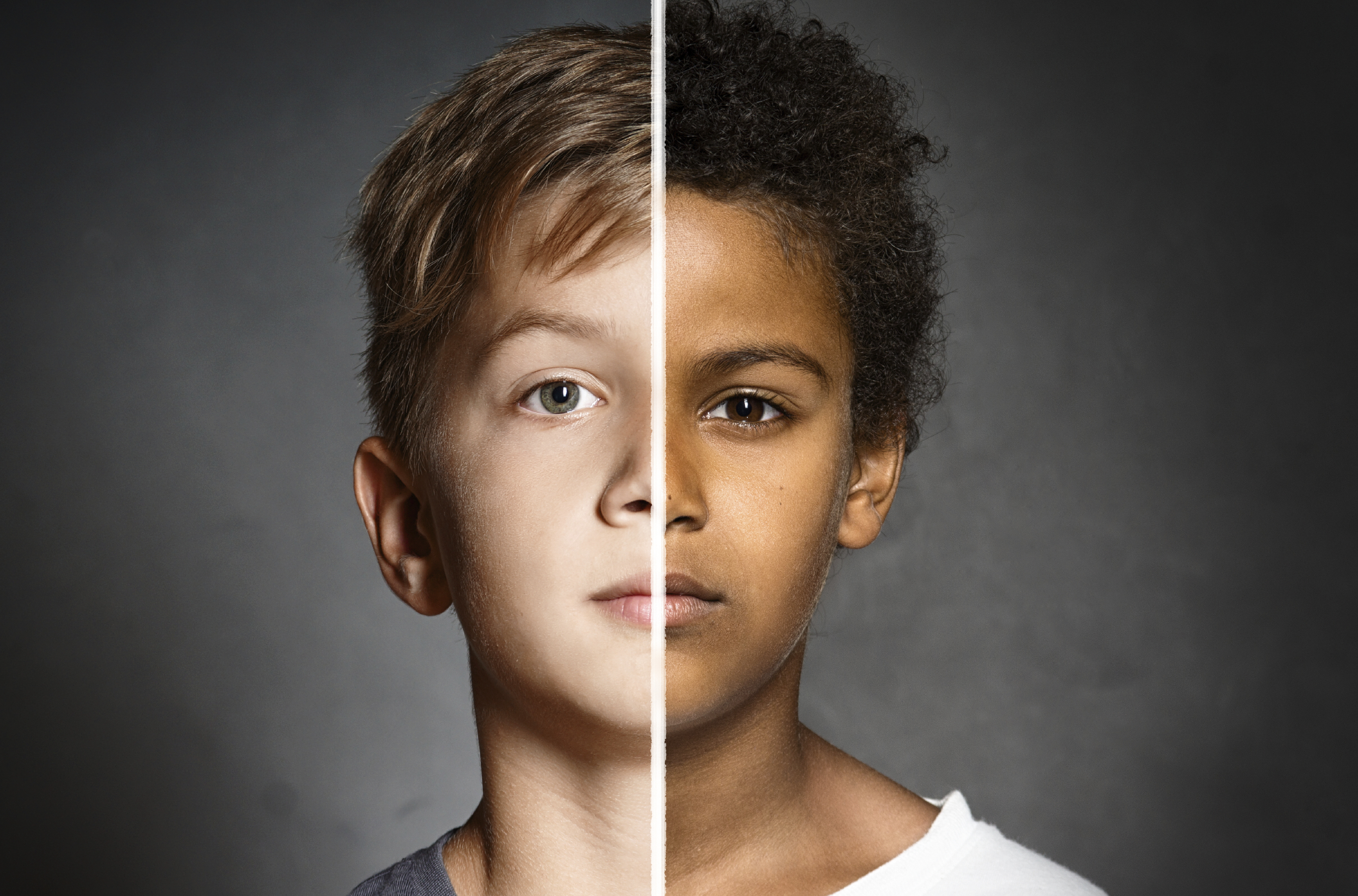
A few months ago, while watching the news from Ferguson, Missouri, my 9-year-old son, who is white, wondered out loud why the police keep killing young black kids. He looked down at his arms and said, “My skin color keeps me safe.”
My son can find himself in the story: Michael Brown walking with a friend, Trayvon Martin coming home from the store with Skittles in his pocket, or Tamir Rice playing in the snow with his toy gun. But even at nine, he knows that the white color of his skin means that the story veers sharply from there. “I don’t think they would have shot me," he said about the white police officer who killed 17-year-old Michael Brown in Ferguson. “I think he would have ignored me or talked nicely to me. He killed him for no reason, except that he was black.”
I encourage these conversations with my son not because I want him to feel guilt or shame about the color of his skin, but because I am trying to cultivate his racial literacy, what cultural commentator Jay Smooth calls racial clear-sightedness — so that he can have the tools to develop the kind of thinking and behaviors that combat racism.
I talk to my son about race because I want him to acquire the skills necessary to understand the structural racism that he already sees around him: unarmed black kids getting shot on the street; poor communities of color; and race disparities in education, school discipline, and the criminal-justice system. I want him to understand systemic causes of racism and to discern racial stereotypes. I want him to understand racism not just as a historical legacy, but as a contemporary problem that still needs to be solved, with many everyday ways to talk about it and challenge it.
I want my son to be race-conscious, not colorblind. I am teaching him that noticing race does not reinforce racial differences, rather it is our inattention to race that actually reinforces racial inequities.
But the colorblind narrative is a compelling one — it speaks to our most aspirational beliefs about race and how we think that the world should be. When we tell our children that we are all the same inside and that race shouldn’t matter, we believe it. Yet in their article, "What White Children Need to Know About Race," Ali Michael and Eleonora Bartoli say, “While white parents' intention is to convey to their children the belief that race shouldn't matter, the message their children receive is that race, in fact, doesn't matter. The intent and aim are noble, but in order for race not to matter in the long run, we have to acknowledge that, currently, it does matter a great deal.”
There are racial differences and our children can see them. In the absence of meaningful engagement from parents about the causes of racial disparities, the messages that white kids do get from media images, school curriculum, and the world around them — which consistently gives preference to whites — go unchallenged. They stay on the surface of the problem and never learn to understand systemic causes; they remain blind to the connection between how they are racially advantaged and how people of color are disadvantaged.
In his recent New York Times editorial, "Constructing a Conversation About Race," Charles M. Blow reported on a CBS poll of black and white Americans about race in America today. In answering questions as to whether or not blacks today face discrimination, 65% of white respondents said that blacks faced “some” or “a lot” of discrimination. Yet, when the poll went on to ask whether whites or blacks had a better chance of getting ahead today and in answering that question, 63% of whites said that their chances were equal.
“We have to stop here and really process what we are saying,” Blow writes, “that even though we acknowledge the existence of discrimination, we still expect those who are the focus of it to succeed, or ‘get ahead,’ at the same rate as those who aren’t. In effect, we are expecting black people to simply shoulder the extra burden that society puts on their shoulders — oppression — while others are free to rise, or even fall, without such a burden — privilege.”
I do not want to shield my son from the ugliness and injustice of racism. I want to strengthen his understanding of its causes and to widen his heart so that he can find his place in combatting it.
This is stark evidence of the different ways white and black people currently perceive racism, as well as the ways that white people are largely protected from the true costs of living in a racially unequal society. In his documentary White Like Me, educator Tim Wise asked white college students what it is like to be white. Most said that they did not know. One woman said that she had never thought about it before, but she perceived it as a negative thing. “It is that thing that you don’t notice,” another said. In the film, Wise commented, “We live with the legacy of inequality that began so long ago, but also the legacy of obliviousness that allows those of us in the dominant group to rarely even think about these matters.”
With a history so closely linked with oppression, it makes sense that many white Americans prefer not to dwell on being white. But as the CBS poll illustrates, if white people don’t think about our whiteness, we remain blind to the ways that we benefit from racial systems of inequality.
We should have conversations with our children about what it means to be white and the way society gives preferences to us for our whiteness. We can also broaden the notion of whiteness to include people who have stood up, and who stand up, to racial injustice. White children need to have examples of whites who fought and fight for racial equality alongside people of color so that they can identify with them and see what it looks like to confront racially unfair systems and practices. Children must learn that racism is not inevitable, that it is not a natural human condition and that there are many everyday ways to challenge and change it.
This is the kind of race consciousness I am trying to cultivate in my own son. I am proud that he got to come with me the day that I first cast my vote for Barack Obama. But I also want him to understand that there are deep racial injustices that still persist in our own backyard and across the country, and that the color of his skin continues to carry all kinds of advantages. It means foregoing the instinct to protect and insulate him and to build awareness and responsibility instead.
I learned this from the example of my own parents. As a kid in the 1970s, I was bussed across town from my white Los Angeles neighborhood to a predominantly black elementary school as part of federal integration efforts. For my siblings and me, riding to school on the bus — a long 45-minute drive, even though the school was a mere three miles away — was a victory, something to be proud of, something my parents had fought for and raised us to believe in.
But for many whites, it was a crushing defeat, and they pulled their children from public schools in huge numbers. In the ensuing years I watched my parents host meetings, organize demonstrations and work side-by-side with black and white parents to try to establish racial parity in our public schools and for other race-affirmative reforms. They taught me that to live a meaningful life, standing up for justice was both a privilege and a responsibility.
My father died the year before Barack Obama was elected president, a barrier broken not in his lifetime, but in my son’s. I wish I could have shared that incredible moment with him. But I fear that the overt racism and bigotry of his generation has been replaced with something perhaps more dangerous — a complacency and silence anchored by the belief that racial disparities are on the wane and that we live in a colorblind world.
I recently pulled off my bookshelf my father’s copy of Martin Luther King Jr’s Strength To Love. According to the notation on the inside of the book, he bought it in 1968 in St. Louis, Missouri, not far from where Michael Brown was killed in Ferguson. In it he had underlined the words, a tough mind and a tender heart.
Like my parents, I do not want to shield my son from the ugliness and injustice of racism. I want to strengthen his understanding of its causes and to widen his heart so that he can find his place in combatting it. I am not teaching him to be colorblind, but to take his blinders off.











